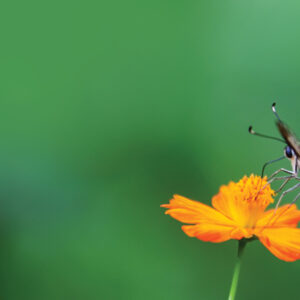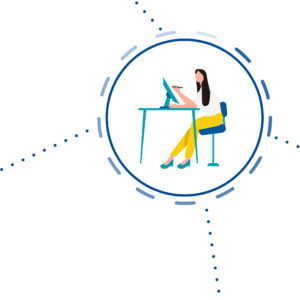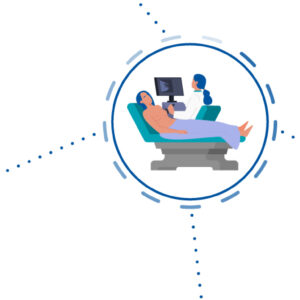Scientific Background
Macrocephaly, defined as a frontooccipital head circumference above the 97th percentile, can have a variety of causes. It can be differentiated into asymptomatic familial forms (so-called benign macrocephaly) and secondary forms resulting from hydrocephalus or other space-occupying intracranial processes such as tumors, hygroma or hematomas. Isolated thickening of the calvarium is rare. In most other cases megalencephaly of varying degree may be the cause, which in turn may also have various causes. After exclusion of the above-mentioned secondary causes, rare genetic diseases can be considered, such as lysosomal storage diseases; leukodystrophies, such as Alexander's disease; metabolic disorders of organic or amino acids, such as glutaraciduria or Canavan disease; as well as other syndromic diseases, such as large growth syndromes. If the usual imaging procedures and/or metabolic examinations do not reveal a cause, a genetic examination using next generation sequencing (gene panel diagnostics) can help clarification, especially in the presence of a developmental disorder.
References
Orrù et al 2018, Am J of Roentgenol. 210:848 / Chitkara et al 2016, InnovAiT 10:1 / Klein et al. 2013, Autism Res. 6:51 / Williams et al 2008, Am J Hum Genet. 146A:2023
LUJAN-FRYNS SYNDROME
Patients with Lujan-Fryns syndrome (LFS), also known as X-linked intellectual disability (XLMR) with marfanoid habitus or X-lined syndromic intellectual developmental disorder (MRXSLF), present with marfanoid habitus, certain craniofacial features, generalized muscle hypotonia, developmental delay, behavioral problems, and nasal speech. Thus, there is clinical overlap with other connective tissue disorders such as Marfan syndrome (MFS), Loeys-Dietz syndrome (LDS), and Shprintzen-Goldberg syndrome (SGS). Inheritance is X-linked recessive, resulting in predominantly male patients, while female carriers are usually clinically inconspicuous.
Hemizygous variants in the MED12 gene, which encodes mediator complex subunit 12, are the genetic cause. Allelic disorders with MED12 variants include FG syndrome type 1 (FGS1) and X‑linked Ohdo syndrome (XLOS). Subsequently, variants in the UPF3B and ZDHHC9 genes have also been described in patients with intellectual disability and marfanoid habitus. However, these patients only partially exhibited the characteristic facial abnormalities of LFS, such as a long narrow face, prominent forehead, broad nasal root, short philtrum, micrognathia, and high palate.
References
Charzewska et al. 2018, Clin Genet 94:450 / Hackmann et al. 2016, Am J Med Genet 170A:94 / Lyons. 2008 Jun 23 [Updated 2016 Aug 11]. In: Adam MP, Ardinger HH, Pagon RA, et al., editors. GeneReviews® [Internet]. Seattle (WA): University of Washington, Seattle; 1993-2021. / Callier et al. 2013, Clin Genet 84:507 / Schwartz et al. 2007, J Med Genet 44:472 / Tarpey et al. 2007, Nat Genet 39:1127 / Raymond et al. 2007, Am J Hum Genet 80:982
See also: Robinow syndrome, Sotos syndrome, Weaver syndrome





















